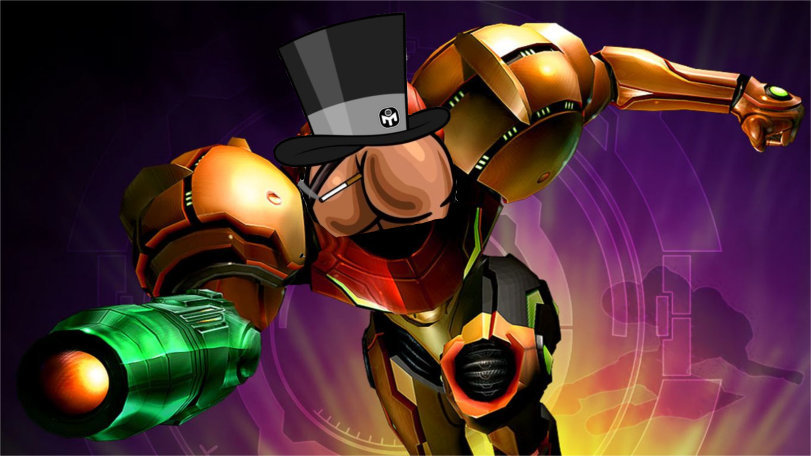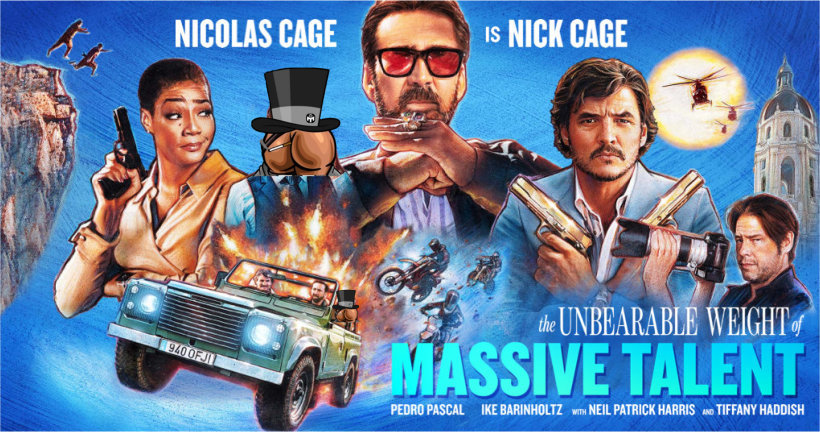The Nintendo Gamecube was the first console from the big N where it became painfully clear that Nintendo could not meet Sony and Microsoft head-on regarding killer apps and hardware. Coming into the console war in what was probably the most contentious console war bracket since SNES vs Genesis, Sony and Microsoft were duking it out with hit after hit. From Grand Theft Auto to Killzone, Halo to Jak and Daxter, and so on and so forth, this generation of gaming was full of legendary games and franchises coming to be. But while Nintendo could not stand toe to toe with Sony and Microsoft, they found a new path forward by focusing on first-party exclusives and the handheld market with Game Boy Advance chewing through AA batteries like Tess Holiday through calories, and the Gameboy Advance SP right around the corner, Nintendo was silently winning by playing their own single player game in the industry.
It was during this period that Metroid Prime was originally released. During a time when every FPS was put up against the dominant Halo series, every front page feature of a new FPS asked the same question: “Is x the Halo Killer?”. I distinctly remember this question being asked about Metroid Prime in the run-up to its release, and with hindsight, I can see that Nintendo won the day by playing by their own rules and standards. Was Metroid Prime a “Halo Killer”? No, but it wasn't trying to be, and that's what made it great.
Zip forward to 2023 and Nintendo caught me with my pants down, straight up stealth dropping the long-rumoured HD Remaster of Metroid Prime, my favourite Metroid game in the series. I should note that I never played the rest of the trilogy, but assuming they get the HD rework for switch too, I will be correcting that very soon. Before Prime, I had only played Super Metroid, some of Metroid Fusion, and not a Metroid game, but the other half of the genre it created, Castlevania Symphony of the Night. Metroid Prime is probably the best translation of a previously 2D series going 3D, though that is unfair to most who paved the way such as Super Mario 64. Every mechanic from Super Metroid was carried over flawlessly and improved upon in Prime.
The most significant upgrade to the formula the switch to 3D had was the morph ball. In the 2D Metroid games, the morph ball was essentially used just to act as a way to fit through small areas. In Prime, you are constantly having to use half pipes, physics, bombs, and even fluid dynamics while in morph ball form to solve puzzles and navigate the environment. Several areas have mazes both vertical and horizontal, and the game makes the greatest use of its 3 dimensions of movement during these segments, it is a fine example of taking the idea from the primitive but original 2D and improving upon it tenfold while transitioning it to a 3D engine.
Another thing that Metroid Prime did exceptionally well was being well-paced and near flawlessly designed on progression, even considering ways to sequence break the game. Every area of the game is designed to keep you moving in the right direction, every room has its unique name, and even areas that are in the same biome all look distinctly different making it easier to know where you are and where you have been. Combined this with the way more and more areas and routes open up with each new unlock and it becomes this amazingly fluid and satisfying sense of accomplishment from the first steps in the Talon overworld to the slogs down in Magmoor caves, I never once felt like I was super lost or got bored.
And all of this is before even mentioning the soundtrack, which was and still is phenomenal. From the sci-fi synth to bombastic fantasy, every area and every combat has a masterful soundtrack with it that perfectly meshes with the atmosphere, the music envelops you and emphasizes how alone Samus is, or relays the danger of being in an underground cavern full of lava, or the intrigue of wandering through a space pirate lab where some sinister experiments have gone terribly wrong.
And this is how every piece of this masterpiece of a game is designed and put together. Every room, every enemy placement, every upgrade, every shortcut, it's all put together in a very intentionally designed way so that even when you have to backtrack, it's to do new things in old areas. Suddenly you can unlock that door you passed a couple of hours ago during your exploration, or you have a new visor that allows you to see secrets you missed previously. It all plays off of itself in perfect tandem. And when it comes to the collectibles and puzzles, they are designed by someone who wants you to find them all, who wants you to solve them and feel good about the experience, so there are no Dark Souls moments where the designers do something just to be cruel to the player. Metroid Prime was lovingly and expertly crafted to be enjoyed.
But all of this was true of the original release, what about the remaster? Everything I have said is still true in the remaster, it just looks better, sounds better, and feels better. One of the biggest upgrades though has to be the modern FPS-style controls, which on the one hand make it far easier to pick up and play, and feel less clunky in some areas. But on the other hand, it completely breaks the combat balance, and that's okay. There is a boss about halfway through the game which has a mechanic where you can't lock onto it. Back on GameCube when you had to stand in place to aim precisely this was a tense battle. Now with modern FPS controls, you can circle-strafe this boss to death like a true boomer shooter. This also had the nasty side effect of making me painfully aware of how bloated and by the numbers the boss battles of this game could be. When I was wrestling with the GameCube controller and control scheme in 2002 I never noticed that you had to hit this boss in its weak point 10+ times, but with the fluid controls, I was yawning as I delivered the final hits.
One thing I didn't mention about the collectables is that while you get an overall percentage of collectables found, and you get a log book on certain collectables, there is no checklist or way to keep track of specifically which collectables you have gotten or where you got them. This is one area where the remaster really could have improved upon the original by adding some form of a checklist or markers to rooms where collectables have been found, or indicating which rooms have no more secrets. It's such a small complaint, but my entire playthrough got sandbagged towards the end because I was missing collectables and was left with no option but to use a guide and go check every single collectable spot on all the maps to find the last few I needed for my 100%. Something I still have not finished, because I got impatient and decided to push to the ending and finish the review, and will probably just start a second playthrough using a guide and paper checklist for my 100% save file. This was probably my biggest complaint about all versions of this masterpiece. So my recommendation is to use a guided checklist for your collectables. Other than that, this is still one of the best games ever released and was just as much fun to play in 2023 as it was a full 20 years ago in 2002.
I rate things I review with one of three ratings:
Hot Shit = Great, get it, met and exceeded expectations
Wet Fart = Rent it, wait for a sale or discount, not worth full price
Cold Diarhea = avoid at all costs, not even worth it to laugh at
And with that in mind, I give Metroid Prime Remastered a Hot Shit rating, this is why you bought a switch.















